Chile Colorado
Chile colorado is a simple chili dish made with pork, dried chiles, and a few other simple ingredients that simmer together until the pork is tender. You can make it mild or hot depending on the type of chiles you use, and it’s delicious served over rice or with tortillas.
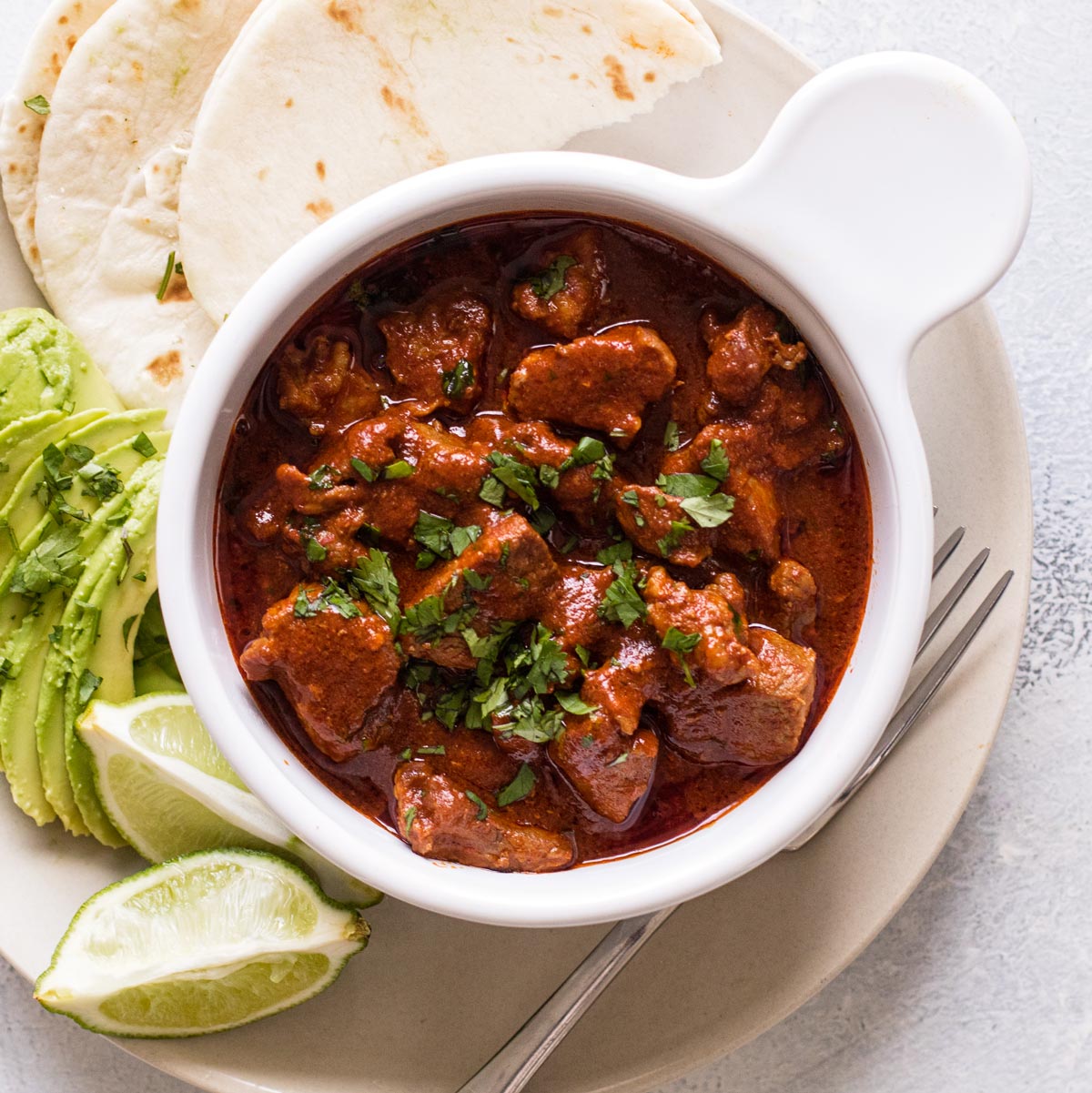
How to Make Chile Colorado
Some people call it “chili colorado,” some people call it “chile colorado,” and some people call it “Colorado chili,” having mistakenly thought it’s a type of chili indigenous to the state of Colorado when, in fact, it is a type of pork chile from our friends in Mexico.
Maybe there is an authentic “Colorado chili” that has deep roots tied to the state, but I haven’t found it yet. I think it may be a case of “Oh, hey! That chili has the same name as our state. Let’s make it our own!” Because while researching “Colorado chili” I kept running into versions of what I’m sharing today: a traditional red chile made with tender pork simmered in a sauce made with dried peppers. “Colorado” in this case refers to the color of the sauce, which is a beautiful shade of red.
Chile Colorado Recipe
Chile Colorado
Chile colorado is a simple chili dish made with pork, dried chile and a few other simple ingredients that simmer together until the pork is tender. You can make it mild or hot depending on the type of chiles you use and it’s delicious served over rice or with tortillas.
- Prep Time: 30 minutes
- Cook Time: 1 hour
- Total Time: 1 hour 30 minutes
- Yield: 6 servings 1x
- Category: Dinner
- Method: Simmer
- Cuisine: Mexican
Ingredients
- 8 dried mild red chiles (see note)
- 1/4 cup vegetable oil
- 2 lbs pork shoulder or pork butt
- 1 teaspoon kosher salt, divided
- 1/2 medium yellow onion, peeled and cut into chunks
- 3 garlic cloves
- 2 teaspoons dried oregano
- 2 teaspoons cumin
- 1 1/2 cups chicken stock
- 1/4 teaspoon ground black pepper
- Juice of one lime
- Chopped cilantro for garnish
Instructions
- Remove stems and seeds from the chiles. I like to do this in a bowl to catch all of the seeds. Place the chile pepper pieces in a bowl or baking dish and cover them with water. Soak the chiles for 30 minutes.
- While the chiles are soaking, prepare the pork. First, cut it into 1 to 2-inch pieces, trimming the excess fat as you go. Season the pieces with 1/2 teaspoon of salt.
- Heat the oil in a large pan over medium-high heat. Brown the pork pieces in a few batches, turning them once. Once the last batch is browned, place all of the browned pork back into the pan. Adjust the heat to low while you make the sauce.
- Place the softened chile peppers plus 1 cup of water in a blender or food processor. Add the onion, garlic, half a teaspoon of salt, oregano, and cumin. Puree the peppers until smooth.
- Strain the pepper puree through a fine mesh sieve into the pan with the pork. Press on the puree to extract as much of the sauce as possible. This will ensure there are no little bits of peppers or seeds in the chile.
- Stir to coat the pork in the chile sauce. Add the chicken stock and stir to combine. Turn the heat to high and bring the pan to a boil. Reduce the heat to maintain a strong simmer and simmer the chile for an hour to an hour and a half, stirring occasionally. It’s ready once the pork is tender and the sauce has thickened.
- Just before serving, add the black pepper and lime juice and stir. Garnish the chile with the cilantro.
Notes
Depending on your heat tolerance, you can switch up the dried chiles and use spicier ones if you prefer. Or, use a combination of different dried chiles (like guajillo chiles and ancho chiles) to give it your own personal spin.
Make ahead: You can make this whole dish ahead and keep it in the refrigerator. It will keep well for several days. You can also make the chile sauce ahead and refrigerate it until you’re ready to cook it with the pork.
Freezer Tip: You can also freeze it! Store it in freezer-safe containers, and it should keep well for several months.
I love this chile in a bowl with toppings like sour cream, avocado, cheese, and crushed chips. It’s great served over rice or with tortillas, especially if you add a fried runny yolk egg on top.
Recipe adapted from Rick Bayless
Nutrition
- Calories: 548
- Sugar: 2.3g
- Sodium: 638.5mg
- Fat: 21.6g
- Saturated Fat: 11.2g
- Unsaturated Fat: 8.3g
- Trans Fat: 0.1g
- Carbohydrates: 7.9g
- Fiber: 0.8g
- Protein: 77.7g
- Cholesterol: 216.5mg
The nutrition is an estimate only. It was calculated using Nutrifox, an online nutrition calculator.
Learn More About This Recipe
This chile Colorado is one of my favorite fall and winter recipes. Every time I make it, I love it even more. It’s cozy, it’s flavorful, and it’s perfect for a Sunday simmering session – it has the most wonderful aroma as it cooks. Plus:
- You can adjust the heat level by varying the types of dried chiles you use. I go the mild route, but you can easily switch things up to make it as spicy as you want.
- There are basically just three steps: make the sauce, brown the pork, and then simmer them both in broth until the sauce has thickened and the pork is tender.
- It keeps well in the fridge, and the flavor only gets better as it sits. Make a batch on Sunday, pop it in the fridge, and you have a few easy dinners for the week.
- It also keeps well in the freezer! Sometimes, I double or triple the batch and freeze it in containers to have on hand for later.
Ingredients
- Dried red chiles – We’re using dried chiles for this recipe, and there are many varieties. I use mild New Mexico chiles I get at my regular grocery store, but you can opt for hotter ones if you like them spicy. Or do a combo of chiles.
- Vegetable oil – Or another neutral-flavored cooking oil.
- Pork shoulder – Or you can use pork butt. For a single batch of chile, use a 2-pound pork shoulder.
- Kosher salt and black pepper
- Yellow onion
- Garlic cloves
- Dried oregano
- Cumin
- Chicken stock
- Lime juice
- Cilantro
Recipe Steps
Soak the Chiles: First, you need to remove the stems and seeds from the dried chiles. I do this over a bowl to catch all the mess.
Place the chile pieces in a bowl or baking dish and cover them with water. This will soften them, so it’s easy to blend them. Soak the chiles for at least 30 minutes or until they’re softened.
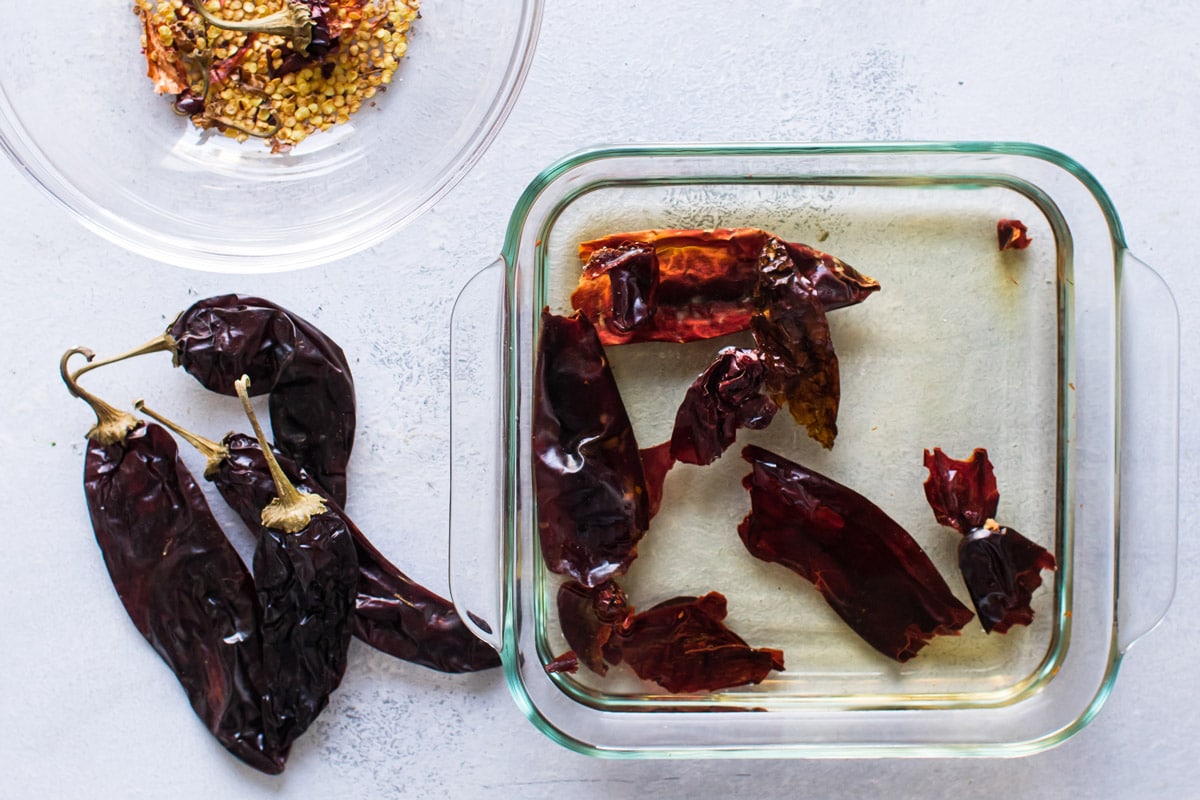
Many recipes will instruct you to toast the chiles first, and I really think this is a personal preference. I tested versions with toasted and not-toasted chiles, and there wasn’t much of a difference. It’s an added step, and one I don’t think is absolutely necessary.
Prep the Pork: While the chiles are soaking, I like to prep the pork. Cut the pork into bite-sized pieces. As you slice and cut it into pieces, trim any parts that have a lot of excess fat and discard the excess.
In a large pan with tall sides, brown the pork pieces in vegetable oil. Depending on the size of your pan, you will need to do this in a few batches. Once a batch is browned, remove it from the pan and brown the next batch.
Once all of the pork is browned, place it all back in the pan and turn the heat to low while you make the sauce.
Make the Red Chile Sauce: By the time you prep and brown the pork, the chiles should be nice and soft. Transfer all of the softened chiles plus one cup of the soaking liquid to a food processor or blender.
Add a roughly chopped onion, garlic, ground cumin, dried oregano and salt. Puree it until the mixture is smooth.
Simmer the Chile: Now that you have your gorgeous red chile sauce, it’s time to pull it all together.
Just in case there are little bits of seeds or unprocessed peppers in your sauce, it’s a good idea to use a fine-mesh strainer to strain it. I do this right over the pork in the pan. Just press on the puree with a spatula to get it through the strainer.
Add some chicken stock, stir it all together, and bring it to a boil. Lower the heat to maintain a strong simmer and simmer the chile for an hour to an hour and a half or until the pork is tender and the sauce has thickened.
How to Serve It
I can eat chile colorado straight from the pan, but for a more civilized approach, here are some other ideas:
- Serve it on warm flour or corn tortillas and top it with a runny yolk fried egg along with some cheese and avocado. (<– my personal favorite).
- Spoon it over rice with some chopped cilantro sprinkled over the top.
- Use it to make tacos, and wrap it up in flour tortillas with your favorite toppings.
- Scoop it over tortilla chips for homemade nachos.
- Serve it in a bowl with all of your favorite chili toppings. Or use it to make some Frito pies.
Happy simmering!

More Chili Recipes
I ❤ a cozy bowl of chili! Here are a few more of my favorite recipes:
📣 Do you love this chile colorado recipe? I would love to know! Leave a comment along with your recipe star rating.








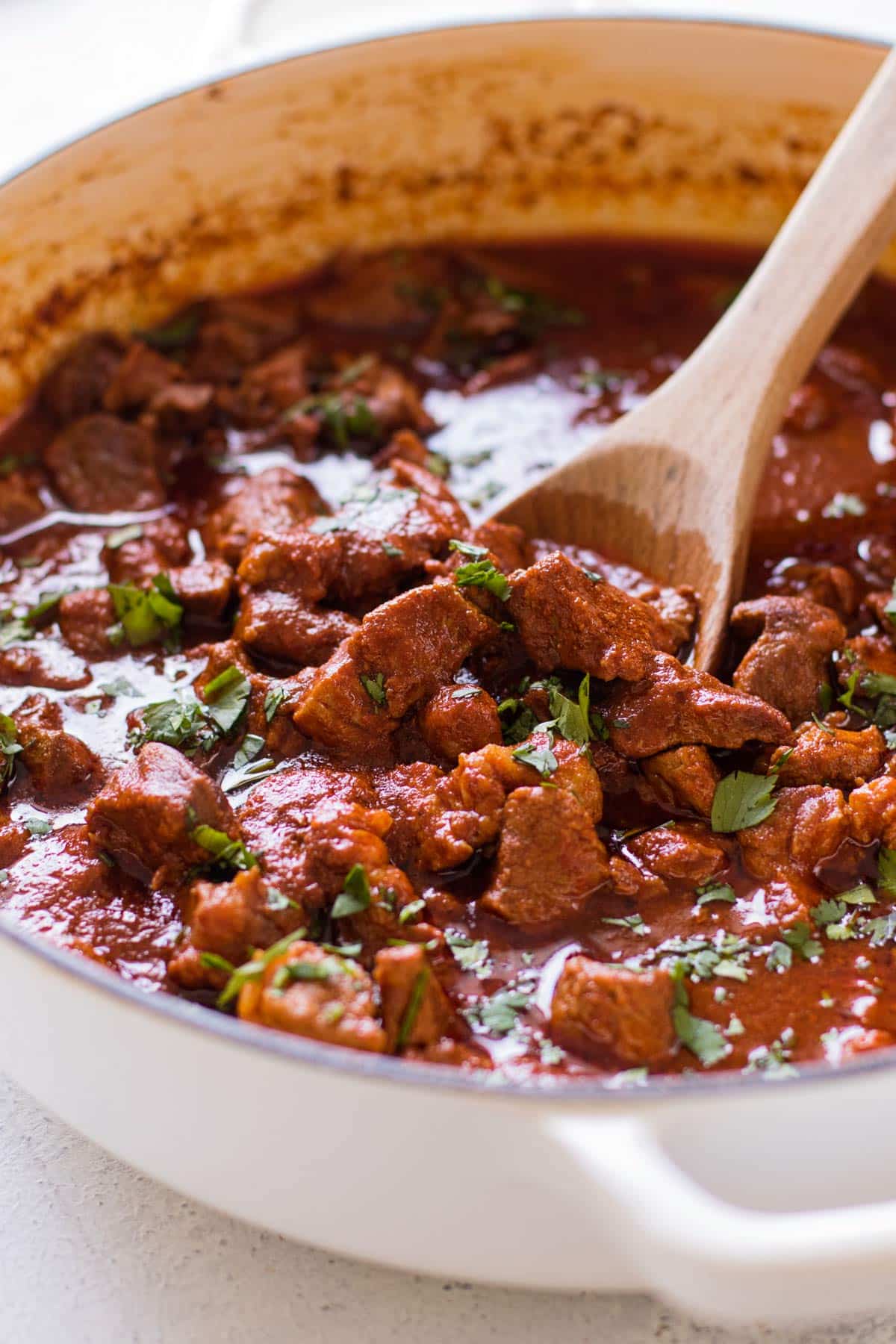
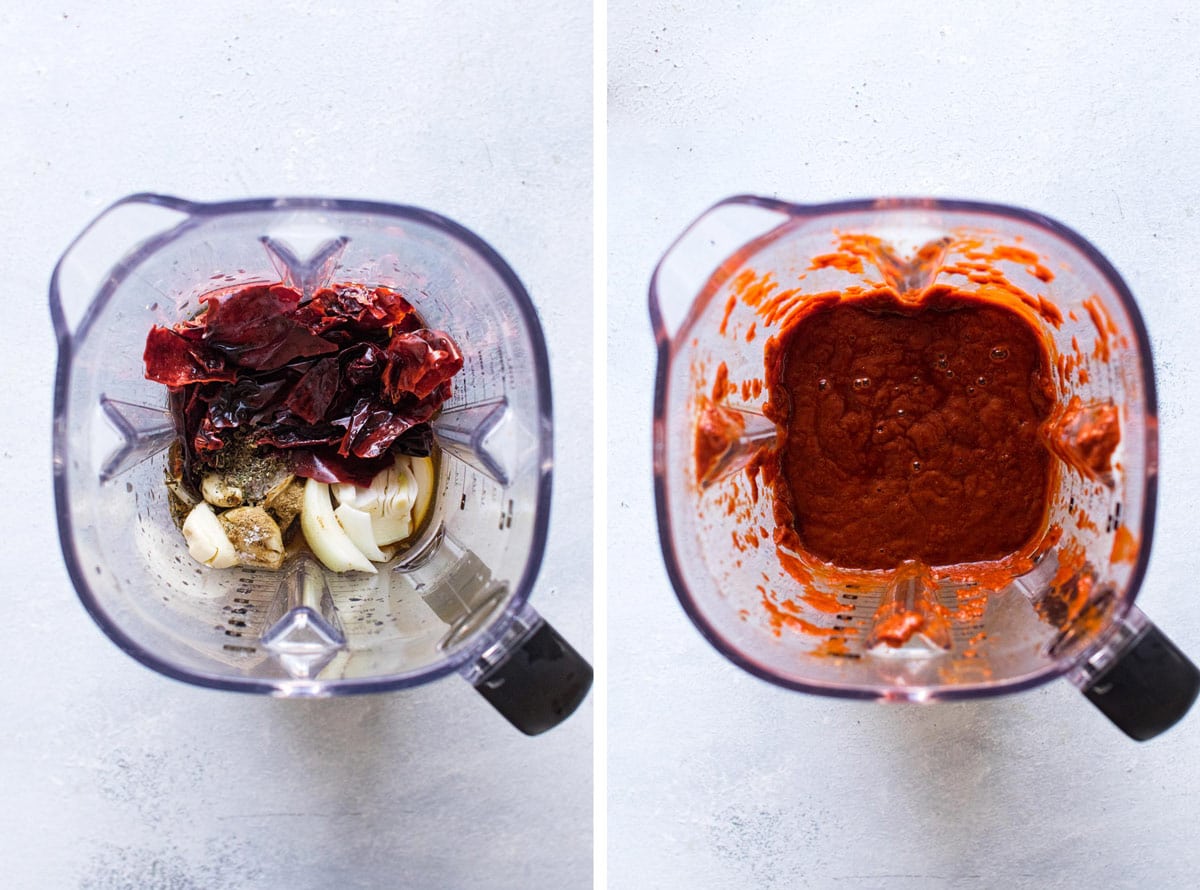
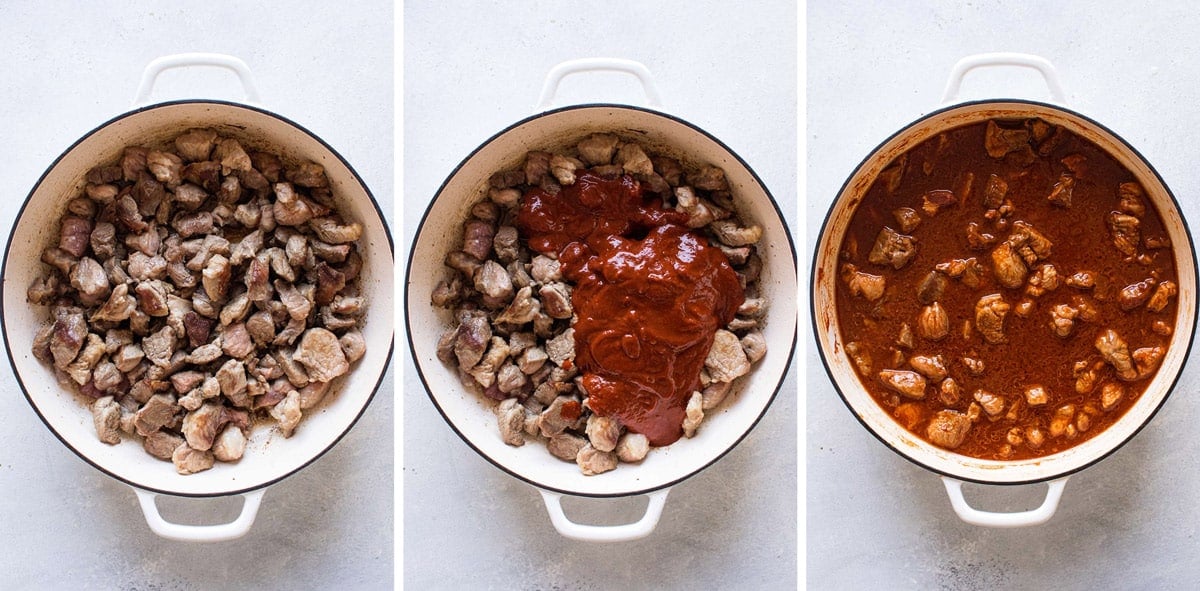
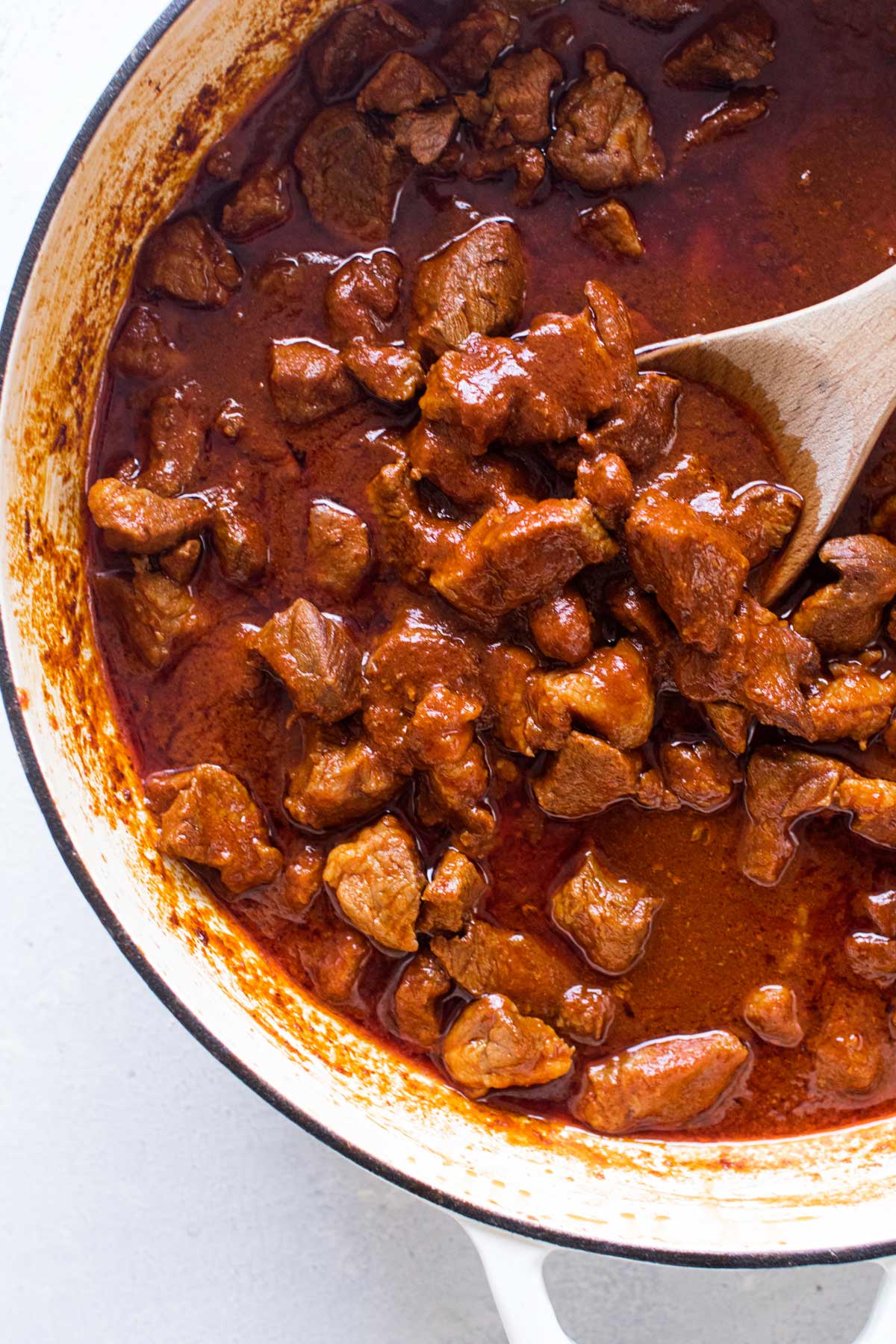
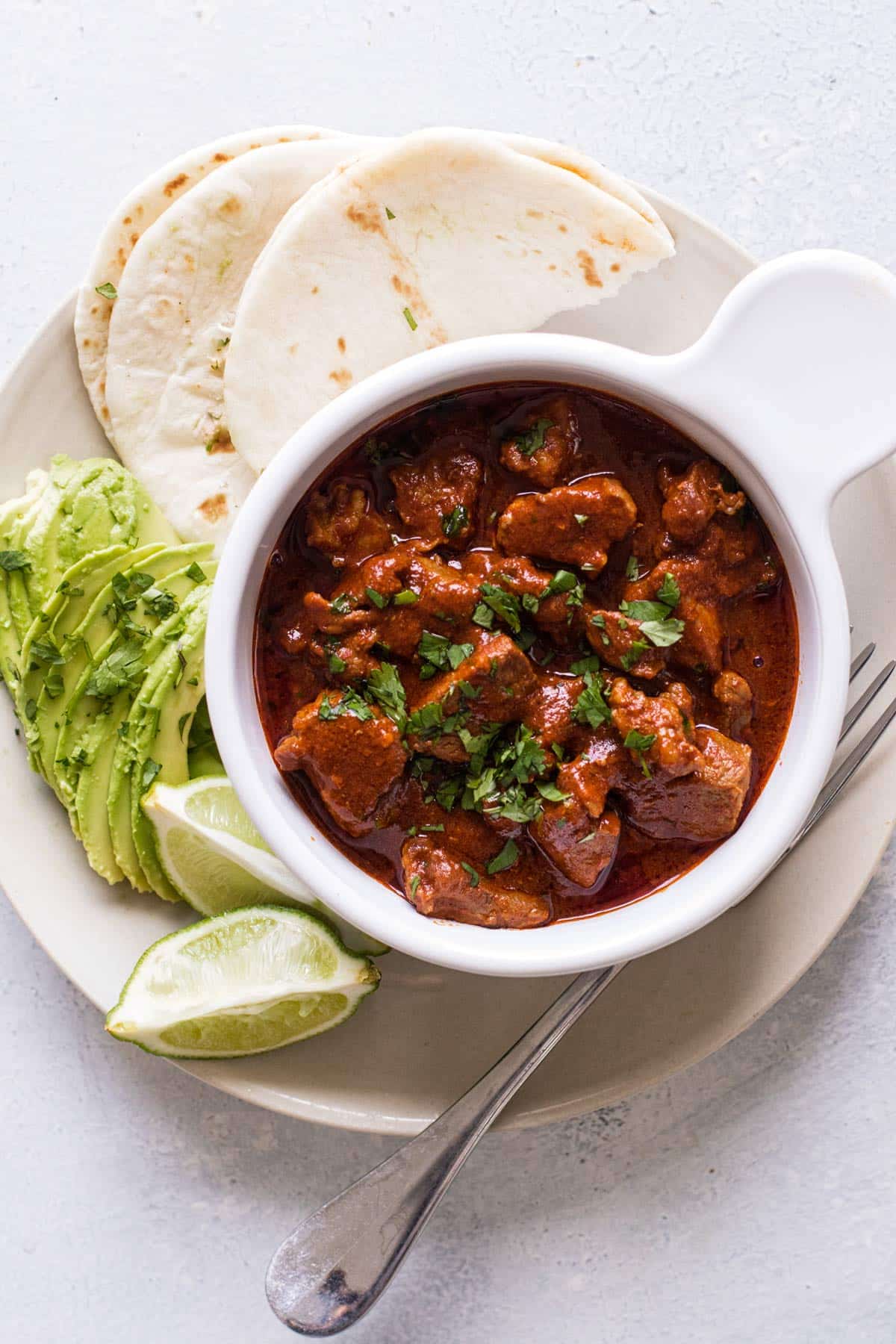
I’m excited to try this recipe! Could you make just the sauce before hand and refrigerate it until you use it with the pork?
Yes, you can make the sauce ahead to use later 🙂 Hope you give it a try!
By the way, Colorado is also a spwnish word. Like many states in the US, they have spanish names cause it use to governed by Spain then by France. So there were many Hispanics or Catholic missions. Like Florida, California, Texas (Tejas), Colorado, Nevada, to name a few. Some cities have Spanish names too. But Colorado means Red or Colored Red. Since the Chili is a red sauce base it’s a Colorado Chili, not because it’s from the state Colorado. You can find this chili in Mexican restaurants named Chili Colorado 😊
Hi Lori! I actually talk about that in the post! “Some people call it “chili colorado” some people call it “chile colorado” and some people call it “Colorado chili” having mistakenly thought it’s a type of chili indigenous to the state of Colorado when, in fact, it is a type of pork chile from our friends in Mexico.”
Can I use chili peppers in adobo sauce instead of the dried peppers?
I’m not sure how that would work – you would need a lot of them plus the sauce so the chili would be really spicy and smoky flavored. I can’t really give good advice on it, but let me know if you try it!
That was a very tasty meal! I used a combination of ancho, California and guajillo chiles for the sauce. I also added 2-3 dried cayenne chiles for heat. The combination of spices and the fat from the pork cooked down into a wonderfully flavorful concoction. The pork was so tender and full of flavor. The lime juice at the end really adds to the flavor as well. Excellent dish!
So glad you liked it!
Hello,
What kind of mild chile did you use?
There are several, but Badia is a brand I’ve used in this recipe – it’s their New Mexico dried red chiles.
Wow! Of all the chili/Chile dishes I’ve had, this was by far the best in terms of flavor. It also was easy to make. I foresee eating this a lot in the future!
My husband is raving about this dish, it is delicious! I like that the heat level can be controlled and the flavor is full with a bit of heat. We ate it over rice tonight but we will have it with tortillas tomorrow. We will definitely be saving this recipe.
So glad you both loved it!